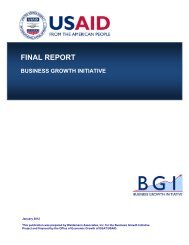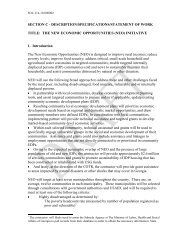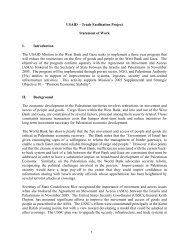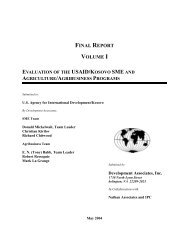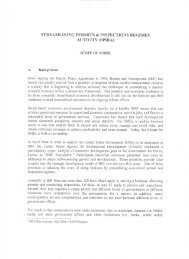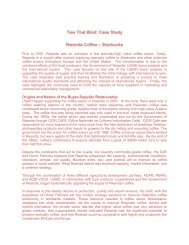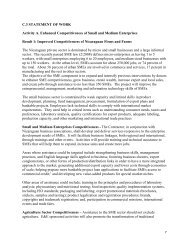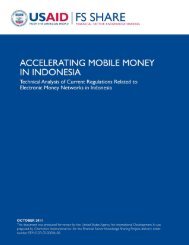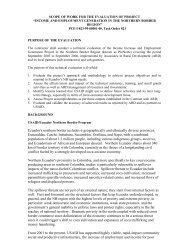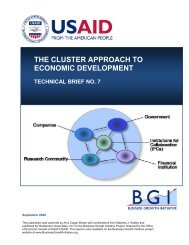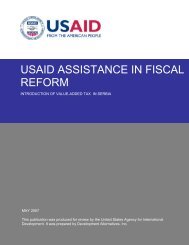Afghanistan's Agenda for Action - Economic Growth - usaid
Afghanistan's Agenda for Action - Economic Growth - usaid
Afghanistan's Agenda for Action - Economic Growth - usaid
Create successful ePaper yourself
Turn your PDF publications into a flip-book with our unique Google optimized e-Paper software.
Afghanistan’s <strong>Agenda</strong> <strong>for</strong> <strong>Action</strong>: Developing the Trade and Business Environment – August 2007COMPETITION LAW AND POLICYNo. Type Recommendation Priority Duration5. Legal development Close and quantified monitoring of industry sectors until such time as a Competition Lawregime should be called <strong>for</strong> by a broad cross-section of businesses, academics, governmentofficials, and would-be investors. At that point, Competition Law should be introduced only inthe sectors where it can quantifiably be shown to be required, and then only to the extentnecessary to correct palpable deficiencies in that market.Medium Long termCOMMERICAL DISPUTE RESOLUTIONNo. Type Recommendation Priority Duration1. Education and The legal professional lacks an adequate supply of legally-educated practitioners, including High Long termtraining/Institutionaldevelopment andcapacity buildingattorneys and judges. Ef<strong>for</strong>ts to bolster legal education should be supported, including lawschools, judicial training centers, etc. This education should include specific and targetededucation on commercial law. Relatedly, a bar association is needed to support such ef<strong>for</strong>tsas well in order to bolster the legal profession in general.2. Institutional re<strong>for</strong>m There is a need to increase staffing at primary courts to alleviate the need <strong>for</strong> courts ofappeals to also act as courts of first instance. Ef<strong>for</strong>ts to re<strong>for</strong>m both administrative andappellate practice should be supported.Medium Medium term3. Legal re<strong>for</strong>m Legal limitations on arbitration, while often not en<strong>for</strong>ced, should be removed from the law toavoid future conflict between accepted practice and the law on the books.4. Institutional re<strong>for</strong>m The length of legal proceedings are unreasonable, and as a result do not provide fairand capacity building protection of a party’s economic interests. Delays exist throughout the system, from basicfunctions of court administration to execution of judgments, <strong>for</strong> reasons including rentseekingbehavior, administrative inefficiencies and lack of education. The Supreme Courtneeds to continue and expand its work in carefully establishing internal strategies, goals,procedures and regulations <strong>for</strong> the ongoing permanent professionalization of the courts,judges, clerks and administrators. Ongoing re<strong>for</strong>m ef<strong>for</strong>ts in this regard must be supported.5. Institutional re<strong>for</strong>m The fee structure <strong>for</strong> bringing claims is inappropriate and will need to be amended soonerrather than later. Fees are not based on the costs of the services rendered and are onlyassessed at judgment. If the parties withdraw a case be<strong>for</strong>e completion, fees will likely not bepaid, or if paid, will only be so after a period of years. The courts cannot effectively predictbudgetary needs based on this system of contingent fees assessed against unknown futureawards. At the same time, the percentage based accounting creates inappropriate incentives<strong>for</strong> the courts to award higher fees to make up <strong>for</strong> shortfalls in budgetary resources. All ofthese factors serve to discourage legitimate use of the judiciary.MediumHighMediumShort termLong termLong term147



